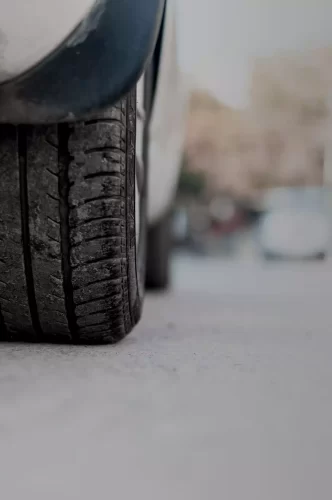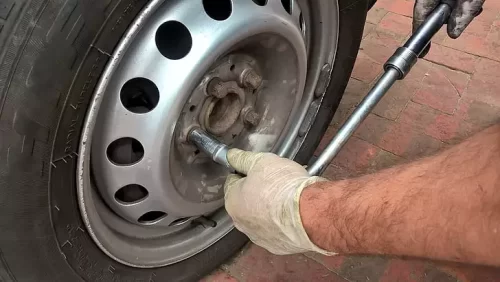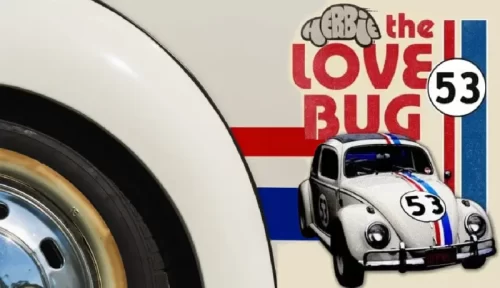
Be Prepared For Inclement Weather
Issue 33 • Engine & Transmission Tips Fall is here! Make sure you’re ready for a bad-weather driving experience October is just around the corner
There isn’t a lot of mystery to checking your tires. It’s something you should do every time you wash your car. If you see any of the issues described later in this article, it’s time to replace one or all of your tires.
Don’t get in the situation where you’re on a car trip, buzzing along at 65 MPH, with spouse napping next to you and the kids playing video games in the back seat when you experience a tire blow-out. Besides being potentially fatal, the experience alone can cause life-long trauma.
Couple that with the fact that your tires were old, or worn, or both. It’s a tough issue to live with when you knew you could replace the tires anytime you wanted.
That being said, here are the tell-tale signs it’s time to replace your tires.

If you’ve noticed that your car loses grip on even damp roads, or actually hydroplanes, or the tires squeal when you travel around the loop of an on-ramp, these are signs that the general health of your tires is degrading, or near failure.
As an experienced driver knows to listen for changes in the sound of your car while driving, it’s also important to feel any changes as well. Tires can develop defects ranging from abnormal wear patterns from bad wheel alignment to failing sidewalls with actual bulges. The steering wheel can also vibrate. Even a slight change in the sensations you are used to when driving can be telegraphed from the tires to your hands on the wheel.
Aside from driving on the same set of tires for a decade, if you see a bald spot forming along the edge of your tire, it is most likely caused by wheels that are out of alignment. That kind of wear is dangerous, and while you can get your wheel alignment fixed, you can’t add rubber to the sidewall of your tire, and that’s what supports your whole car while you’re driving. So, be safe, and get those tires replaced.
If you live in extreme climates, like the Northern states where you get lots of snow, which comes with lots of salt, your tires will break down faster. The same goes for extremely hot climates like the southern Midwest. Moisturizing tire dressings, especially ones with UV protection will extend the life of your tires, but only to a certain degree.

If you’ve ever opened your car door and noticed a nail or screw in your tire, you know what obvious visual damage is. Punctures can be easily and permanently fixed, but other damage can include gashes or severe scraping along one side of your tire, often to the extent of seeing the underlying fiberglass strands. Again, at that point, its time to replace that tire.
Rubber is a natural material, and will break down over time. Even if you keep your car in a garage and only drive it to church on Sundays, the tires will eventually start to decay. An example is the curse of storing your car in a garage for an extended period of time, like storing a convertible over the Winter. You come back three months later only to find the perfectly fine tires have flat spots where the car sat in the same spot. These flat spots often work themselves out after a bit of driving, but for cheaper tires, this can be disastrous. Older tires suffer from this and other issues, like developing fine cracks in the rubber is it shrinks around the embedded fiberglass threads.
Just know that SIX (6) years is the magic age at which to replace your tires, even if they look fine. Fraser Fast-Tip: You can tell how old your tire is by looking for the Department of Transportation code, which starts with DOT and ends with a four-digit code that is the week and year your tire was manufactured. 5218 would be the 52nd week of the year 2018.
According to Consumer Reports, it really is best to stick with the type of tires that came on your car. You can opt for different brands or configurations, but the tire size should be a constant, and we highly recommend always choosing a tire rated A for Treadwear, A for Traction, and at least B for Temperature.
 The side of your tire contains a wealth of information including the items above as well as when it was made, and it’s quality. Here’s the legend:
The side of your tire contains a wealth of information including the items above as well as when it was made, and it’s quality. Here’s the legend:
On a final note, changing your tires is not a do-it-yourself task. Even if you’ve worked in an automotive garage, you know there are tools and machines designed specifically to mount and balance tires with accuracy that will provide ultimate comfort and confidence.

Issue 33 • Engine & Transmission Tips Fall is here! Make sure you’re ready for a bad-weather driving experience October is just around the corner

Mopar OEM Chrysler 5.7L Crate Engine (2013-2018) Mopar OEM Chrysler 5.7L Crate Engine (2013-2016) 7 Year FRASER PLUS™ Warranty Included $ 4499 00 CORE DEPOSIT

Your Ford Ranger is more than just a vehicle. It’s a companion for both the everyday city drive and the adventurous off-road excursion. To keep

1968 Ford Mustang GT ENGINE SPECS for the “Bullitt” Car:1968 Ford Mustang GT6.4 Liter RB V8 EngineBorg-Warner T-10 Heavy-Duty TransmissionEstimated Brake-Horsepower Rating of 320 The

Party On! in Garth’s famous 1976 AMC Pacer, the Mirthmobile In 1992 Wayne’s World took theaters by storm. This is the story of the unsung

In this issue, we learn about the long history about Herbie, The Love Bug. Herbie, The Love Bug, that famous VW Beetle, spans a cinematic lifetime